Table of content
At Tribe47 we always say that there are three things you need to grow your business online:
- A well-structured client acquisition process that runs across multiple platforms (in other words, a kick-ass digital sales funnel :))
- Metrics to guide the optimization of your funnel so you can hit your business KPIs (revenue and clients)
- And finally, a team to build and run your funnel, optimizing it against the metrics.
As you can see, it all starts with a FUNNEL.
So, if you are planning to launch an online business – or you are struggling to grow an existing one – I invite you to explore the subject of digital sales funnels with me now in this article.
Designing and implementing funnels has been my bread and butter for over 10 years and is still my favorite topic to discuss.
What I am about to share with you will clarify exactly what a digital funnel is, and help you to answer that tricky question: “What digital sales funnel do I need to grow my business?”
To give you the fullest possible understanding of this topic, I will be approaching it from a few different perspectives, ending with the one about which I am most passionate – how the most effective funnel model varies depending on the type of online business.
Read on to discover:
- what a digital sales funnel is and what it looks like;
- how funnel methodologies have evolved over time (I will use some personal and even once embarrassing stories to explain it better to you);
- what crucial skills you need to build the funnel;
- the metrics you should pay attention to when running your funnel;
- and finally, how and why funnels differ across different business types.
Digital sales funnels are phenomenally powerful tools that can help shoot your business up into the sales stratosphere. But before you take the plunge and build one of your own, it’s important to remember that there is no one-size-fits-all approach to funnels. Get your funnel wrong, and you could miss out on some valuable opportunities.
Find your perfect funnel match by reading on to discover more about how funnels originated and which funnel metrics really matter.
What is a digital sales funnel?
A digital sales funnel is the user’s journey from becoming aware of a brand or product to purchasing it.

A digital sales funnel can represent the entire digital marketing and sales process.
Let’s look at some examples…
Starting with a bad one ????
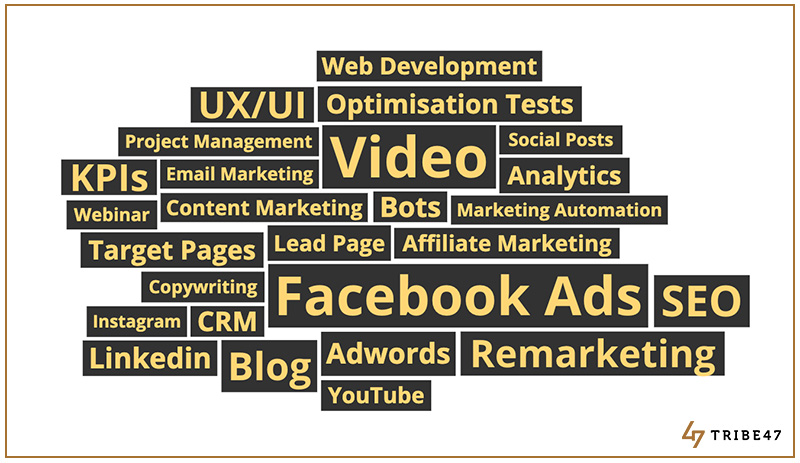
This messy and unstructured approach is common to many businesses, especially at an early stage of the business.
Another digital sales funnel to look at:
Here you can see a simplified funnel model used by Hubspot, which I personally really like:
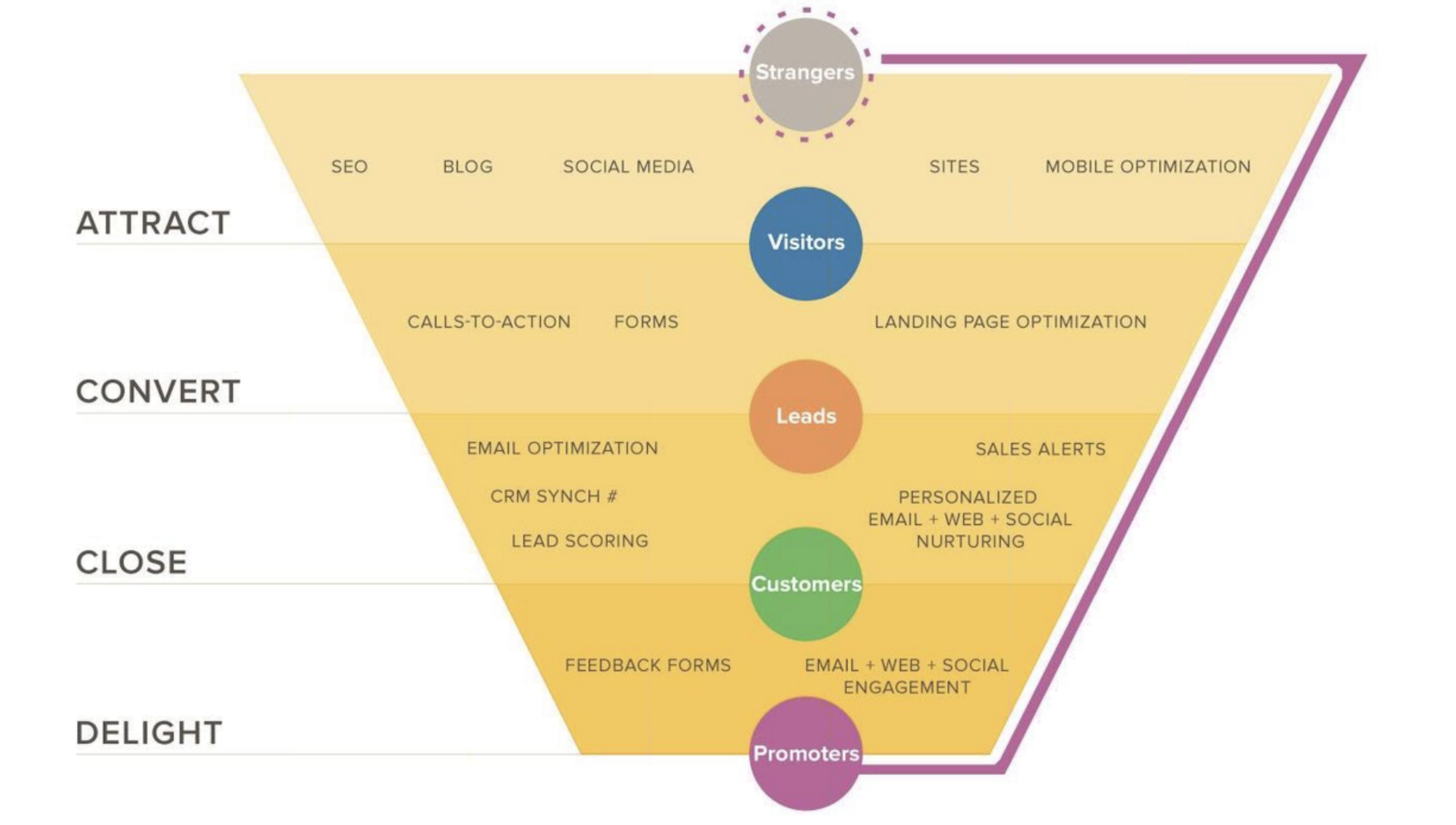
The Hubspot funnel model nicely shows in four simple steps the psychological aspect of what should happen with your prospect. You can read more about how Hubspot breaks it down here.
In the following diagram, you can see a slightly more built-up version of the same funnel model broken into eight steps:
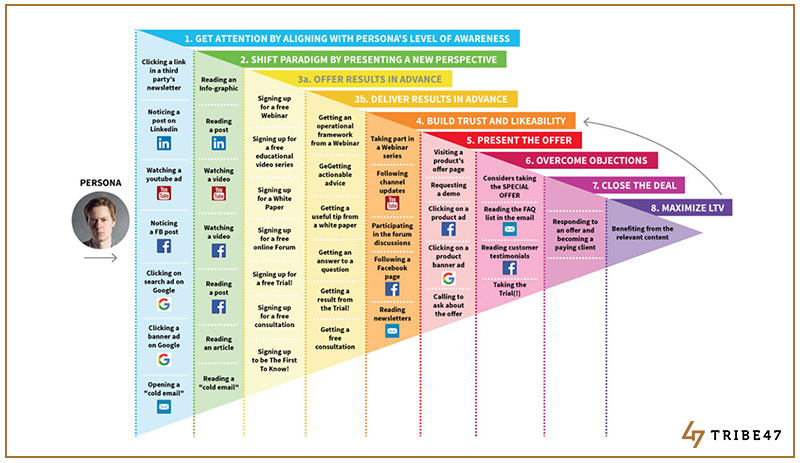
We often use this funnel model at Tribe47 to give our clients a clear perspective on where different online tactics can be used for the most significant effect. It’s also helpful when explaining why driving totally “cold” traffic straight to your lead pages is a bad idea… But more on that in a minute….
And finally, here is an actual funnel model drawn by our team for one of our client businesses:
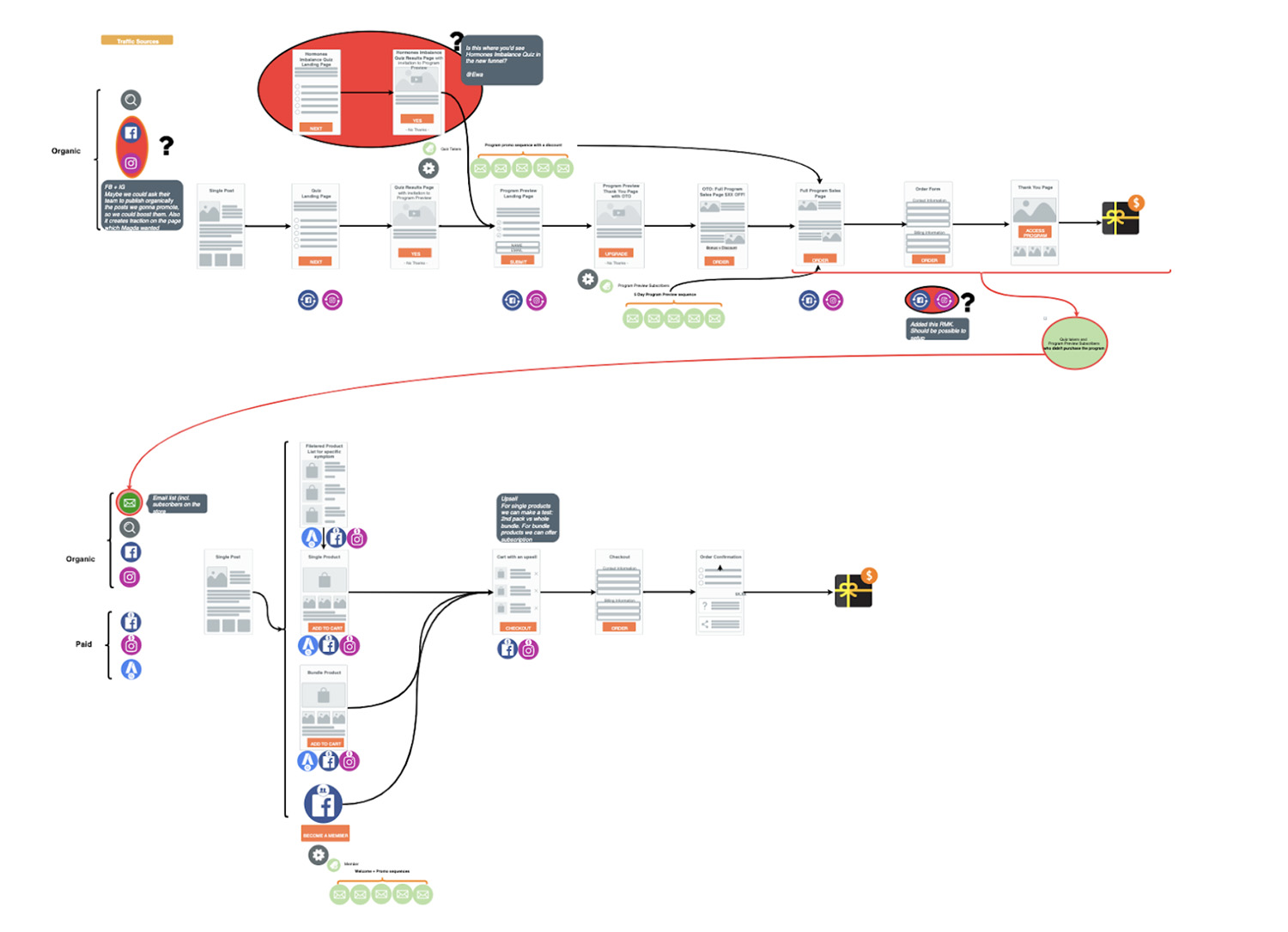
Digital Sales Funnel 1.0 – When Copywriters and Direct Response Marketers Ruled The World
My journey with online sales funnels began in Kuala Lumpur, Malaysia at a company called Mindvalley, founded in the early 2000s by Vishen Lakhiani.
In short – Mindvalley business started when Vishen decided to dedicate his life to spreading enlightened ideas to people around the world and simultaneously mastered the Google AdWords platform.
It may seem basic now, but at that time, not many people really knew how to use Google AdWords effectively.
Over the years, Mindvalley transformed from a startup selling meditation CDs online into a leading personal growth brand.
Still, from an online marketing perspective, it really all started with a good and needed product and the ability to advertise on the Google platform.
In these early times, digital sales funnels looked very basic. Online traffic was acquired on Google and driven to sales pages where people could buy the product directly:
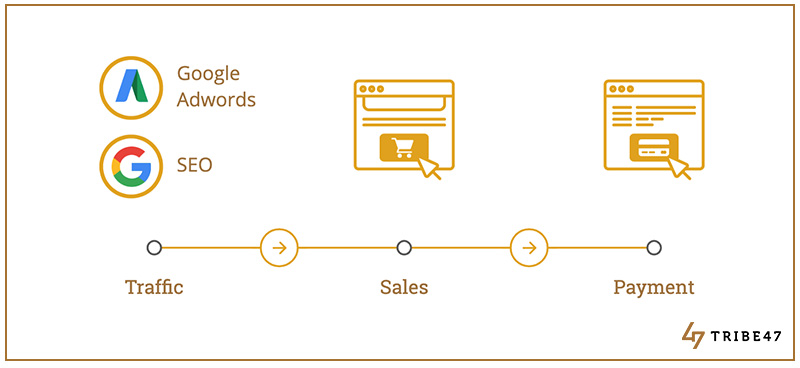
The key metrics of Funnel 1.0 – to observe and optimize – were also pretty basic:

Crucial skills needed to build these early-stage funnels were:
- Marketing and sales psychology
- At this point, digital marketing was really an extension of direct response marketing – a digital version of direct mail.
- Smart usage of behavioral psychology triggers, the construction of an interesting Unique Selling Point, a message directed to the right end user (Persona), and good differentiation from competitors formed the basis of a good online campaign.
- Details like aesthetics, page interactivity, and the usage of multiple media formats, didn’t matter as much because the industry as a whole was very unsophisticated.
- Performance copywriting
- Since the text was the key element on what were very often visually unappealing pages, direct response copywriters like Dan S. Kennedy, Gary Bencivenga, Joseph Sugerman, and others were cashing big checks.
Digital Sales Funnel 2.0 – How Lead Generation Helped Marketers To Regain Trust
A major turning point in digital marketing came around the year 2007.
As an increasing number of people set up digital ads on Google AdWords, the ads became more intense, and scammers swooped in to prey on online users.
Confronted with a marketplace that had become saturated with high-pressure ads and scams, people lost trust in digital ads and made fewer purchases.
As a result, advertising costs climbed so high that advertising online no longer made financial sense…
Fortunately, this only boosted marketers’ creativity, inspiring them to dig deeper into behavioral psychology to discover the next BIG thing – online lead campaigns.
Lead campaigns work by leveraging two persuasion triggers described very well by Robert Cialdini in his book, Influence:
- Reciprocity – the idea that we are far more likely to do something for another person if they do something nice for us first;
- Commitment and consistency – we are more likely to say YES if we had already said YES before (even if the first YES was to a much smaller question).
A lead campaign invites people to leave personal details like their email address or phone number in return for a valuable gift that is given to them FREE of charge.
These gifts are usually digital goods such as ebooks, webinars, reports, and discount coupons but can also be physical goods like hard copies of books and product samples.
So, instead of driving everyone straight to the sales page, marketers started to collect leads first and use them to build relationships with users via the sending of emails. This caused a funnel to evolve:
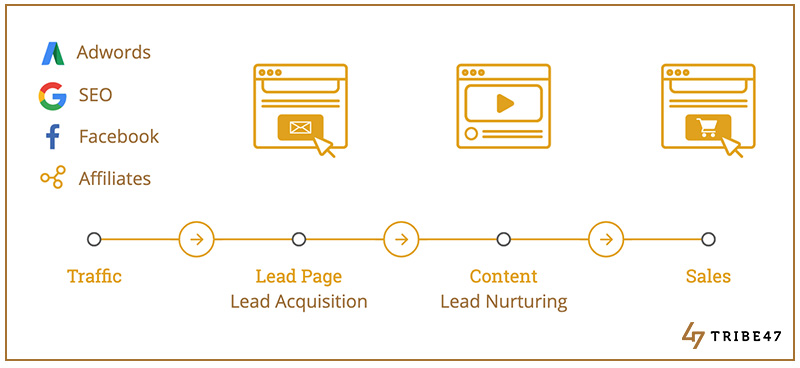
With this new element came new metrics and Lead Acquisition Cost or Cost Per Lead (CPL) swiftly became the holy grail of digital marketing.

New skills needed to execute funnel 2.0:
1. Lead Generation
The key to business growth was stable and controlled lead acquisition which was best achieved via evergreen funnel models that relied on different “evergreen” lead magnets such as ebooks, special reports, checklists, etc.
The size of your lead base was usually proportional to the size and revenue of your business.
To maximize sales, marketers used real-time lead campaigns like webinars and launch sequences. These campaigns were often directed at acquired leads in need of reactivation, offering them a new chance for meaningful engagement.
2. Marketing Automation
With the rise of a variety of systems came the challenge of selecting the right software to automate your lead acquisition and lead nurturing processes.
Automation sped up the process of building pages for lead acquisition and made it easier to run campaigns smoothly.
3. Website UX and UI
Around 2010, ugly pages that relied heavily on text gave way to visually appealing pages with elegant elements, resulting in a > 20% improvement in page conversions.
4. Multichannel traffic campaigns
Online traffic acquisition became more complex, with an increasing number of channels coming into play, many of which functioned in a different way from Google AdWords.
Digital Sales Funnel 3.0 – Content First (a lesson I learned the hard way)
For me, the magic started happening around 2015 when I was working as a consultant, advising different companies on how to build digital funnel strategies.
What happened next is actually a little sad and cringeworthy but I want to share it with you to illustrate just how much you can learn from making a mistake. In the end, I am very grateful for what this lesson taught me.
At the time, I was working on a digital platform for practitioners of a very popular sport. Thanks to the enthusiasm and boldness of the founder, we were able to execute a perfect version of the funnel 2.0.
We had the most creative lead magnets, the best UX and design, and an amazing team of copywriters too. I had never built such a masterpiece before and I was so proud of it.
Unfortunately, despite all our efforts and a carefully constructed funnel, our cost of acquisition was skyrocketing and we couldn’t work out why.
It was deeply frustrating for the whole team. We would spend long nights at the office, experimenting and optimizing like never before, but nothing seemed to work…
Finally, a random testing experiment brought something good up.
And this “something” helped us cut the acquisition costs of new clients by almost 30%!
We were so happy! Sadly our discovery came too late to save the business, yet the learning was priceless.
What was that secret something that took us so long to figure out?
Quite simply, we started driving all traffic (not only SEO) to engaging content pieces in multiple formats instead of sending them straight to our beautiful lead pages.
We then used the retargeting mechanisms available on different advertising platforms to direct ONLY the content consumers to our lead pages.
With this method, we were able to drop the customer acquisition cost and still scale the campaign.
We gave this new approach the title “Content First”
Once Content First was up and running, I soon realized that the marketers whom I most admired were already using this approach. I was determined to learn more about it by listening to Perpetual Traffic Podcast by Digital Marketer. It wasn’t long before I came across Ezra Firestone’s conversion model in which he uses content first ALWAYS on all channels when marketing his eCommerce business Boom By Cindy Joseph.
Inspired by what we had learned, we started to use content religiously to engage with the user, making sure it was the first thing that people saw before being driven further into the funnel.
Here you can see a content piece we used for one of our clients as part of a strategy to optimize their customer acquisition cost and scale their business:
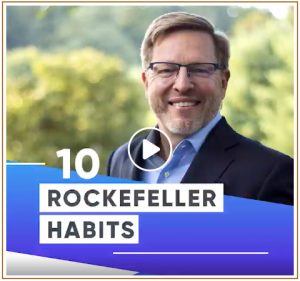
By using content at the Top of the Funnel stage and sending all the traffic to the content piece first (even the traffic from paid campaigns!), we were able to drop the customer acquisition cost and simultaneously scale the revenue twice.
This is what such a funnel model looks like:
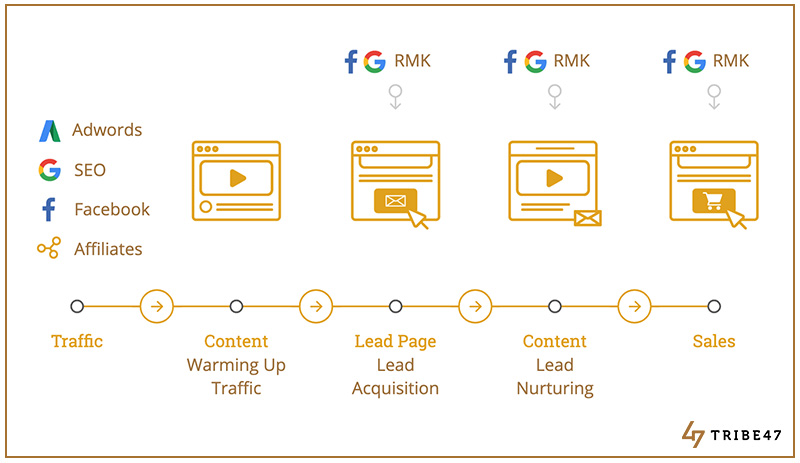
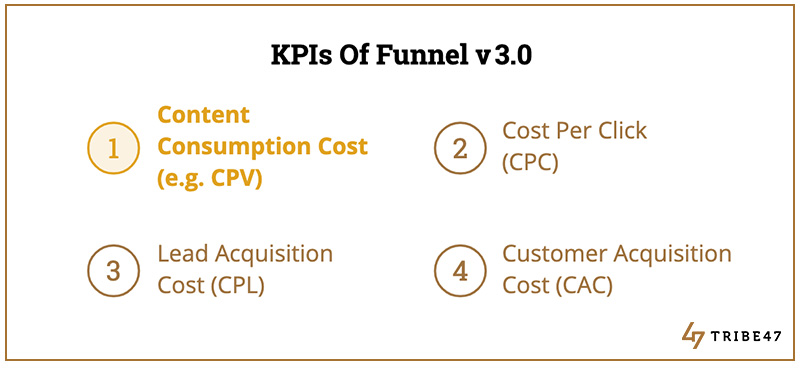
Every time we present this approach to our clients for the first time we hear something like: “What? Are we supposed to drive traffic to content instead of lead pages? It makes no sense. This will never work. We’ll just blow our money…”
Content First campaigns are slow burners, usually taking a while to kick in, so the first weeks are a nail-biting patience test for everyone.
But finally, when we calculate the results, even though a lot of money has been spent on content distribution, it has enabled us to build massive audiences that can be converted more efficiently into leads and later into sales.
New skills needed to execute an effective Digital Sales Funnel 3.0:
1. Building Ungated Content Campaigns
“Ungated content” is content that does not require any signup or payment to be consumed. I think the term was coined by the Digital Marketer.
It is exactly this type of content that can be used at the beginning of the funnel to engage and attract new audiences whom you can remarket to when they have journeyed further into the model.
To construct this type of content well, you need to think strategically from the very start about how you can present it in a way that will warm people up for the upcoming lead and sales campaigns.
2. Video Production
Video allows you to build a wider audience as it distributes easier than any other content. Facebook, Instagram, and YouTube allow you to build remarketing audiences consisting of people who consume your video content.
The trick lies in being able to produce an irresistible video that gets noticed and consumed in the online space.
3. Project Management
With the advent of Funnel 3.0, this skill went from important to absolutely essential because this model relies on the successful interplay of many linear processes.
We have content, lead campaigns, and sales campaigns happening at the same time. On top of that, there are remarketing processes, multiple sources of traffic, and different specialists which all have to work together. To manage this entire interlinking ecosystem you must become a true project management master.
4. Multichannel Traffic Campaigns
Traffic campaigns are more complex, entailing the management of multiple channels, and of various remarketing audiences who are being targeted via different channels simultaneously.
5. Data Reporting and Analysis
Funnel architects need to understand how much each of the funnel sections contributes to the final goal of attracting the customer. The game may be longer but it’s still about end customer acquisition.
Here, as a summary, you can see an infographic showing the evolution of the digital sales funnel:
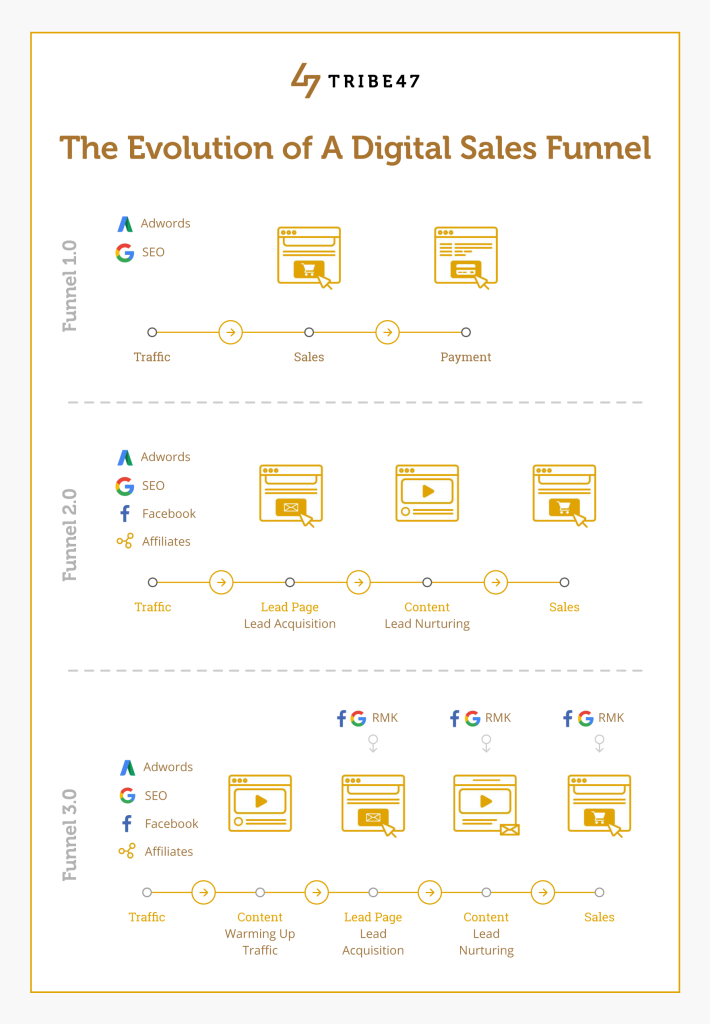
Different businesses – same digital sales funnel?
So far we have covered how a Multi-channel, Content First funnel model with lots of Remarketing works and we looked in detail at what skills you need to have in your time to build it.
The big question now is: How should you adjust this generic funnel flow to fit your particular business?
Over the last 15 years I have worked with many different types of online businesses, building funnel frameworks I am proud to share.
Experience has taught me that while there is no “one size fits all” digital sales funnel, there are certain funnels that work well with particular business types.
Below I’ve outlined the four groups into which most online businesses fall together with details of their best-fitting digital sales funnel model:
1. Subscription Business (B2C)
I am referring to all the membership platforms and apps like fitness TVs, diet apps, meditation apps, etc. These businesses are characterized by a small monthly recurring fee and low attachment to the product (unless worked on).
The most effective funnel for this type of business will display the following characteristics:
- Relatively short funnels where content can lead straight into a freemium or paid account creation landing page;
- Churn mitigation tactics and intense post-purchase flow – a lot happens after a user creates an account and lots of marketing is done to activate the user within the membership platform and keep them coming back.
- Dual appeal – an evergreen funnel is supported by many seasonal campaigns built around different topics, user motivations, or new product releases.
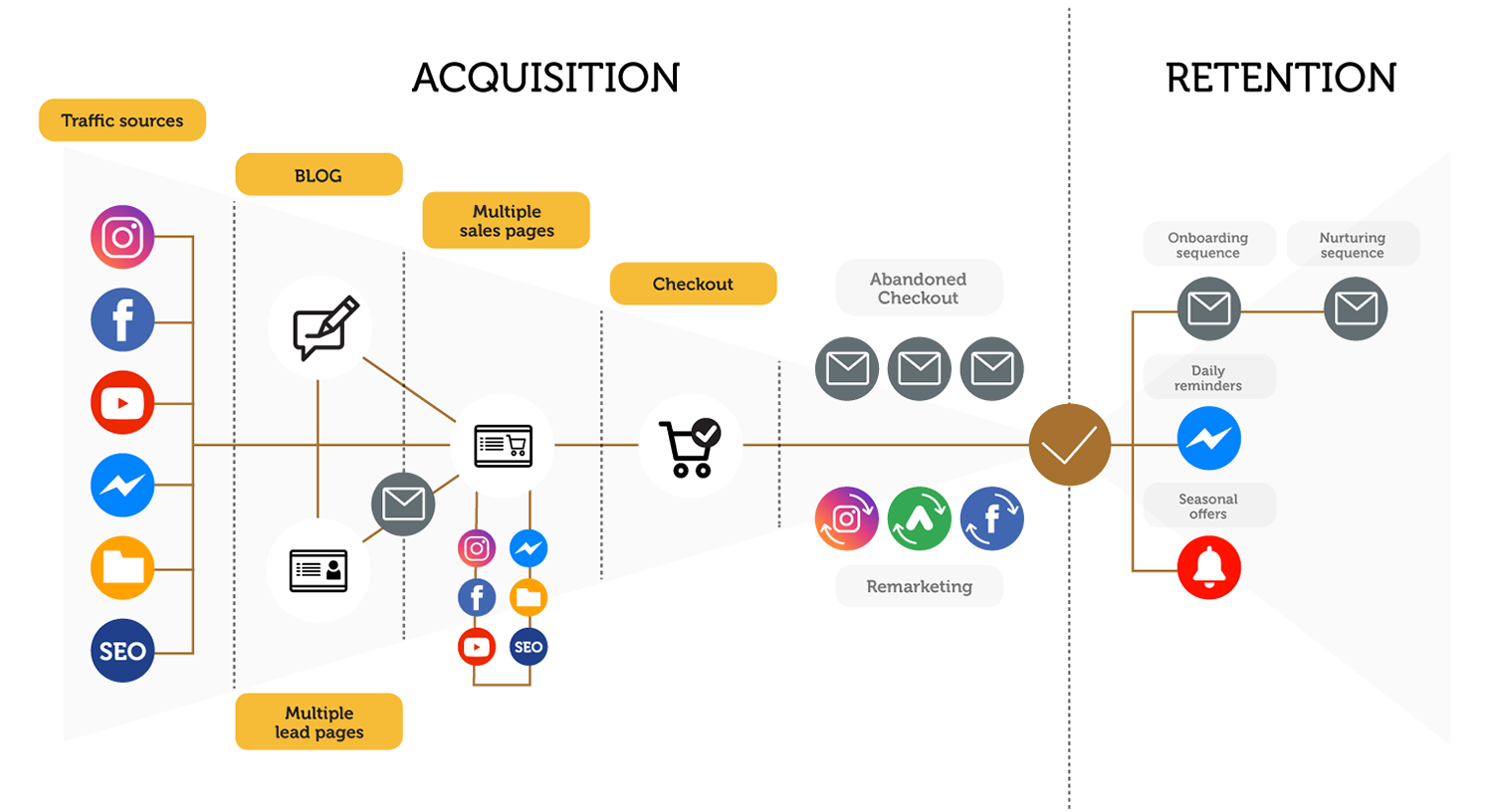
2. Subscription Business (B2B)
The funnel for this type of business is similar to that used for a B2C subscription business with the following differences:
- The Bottom of Funnel often integrates a direct sales element (a call between a sales rep and a potential buyer or freemium platform user)
- Monitoring user activities within the product should be one of the key activities of the product & marketing team, and you should take different actions toward users based on their in-app activity
- Traffic sources will usually include LinkedIn which requires building some personal brand presence. B2B service providers don’t run an online business ???? However, they also need leads to feed their sales pipeline. Their funnel flow is similar to B2B Saas until the moment of sales lead acquisition.
3. Online Education Products (tickets over $100)
For this type of business, a digital sales and marketing funnel should:
- Grow and continuously nurture online communities on social media channels with ungated content
- Employ 2 lead generation layers. The first layer should collect low-engagement leads (signing up for easy-to-consume content like checklists or quizzes). The second layer should draw leads through more demanding campaigns that rely on motivating users to consume content, such as a campaign requiring users to sign up for webinars or a video series.
- Use a third lead layer, such as an application to participate in a course, to sell products over $1000. This will help to drive intent.
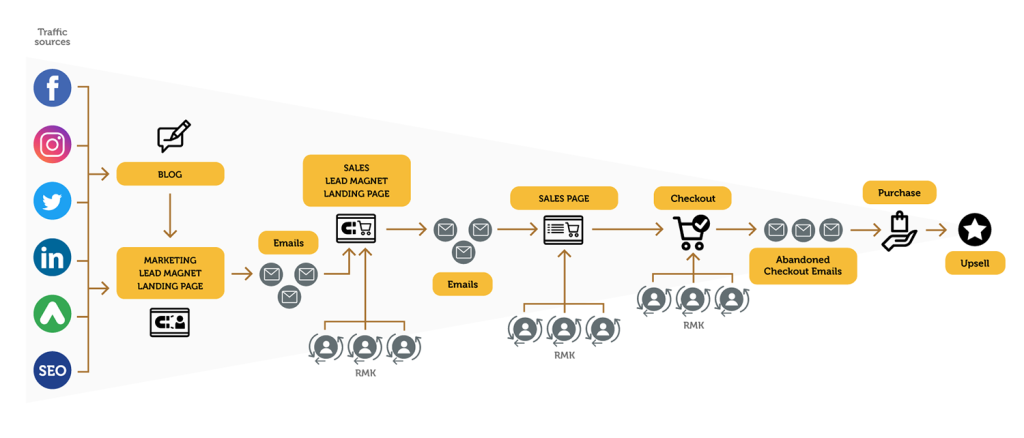
4. Mono-brand e-commerce business (selling fast-moving consumer goods online)
My new favorite type of funnel is characterized by:
- Short pathways from content to sales – to profit from spontaneous shopping behavior. Out of all the products above, physical products are the easiest purchases because usually not much product onboarding is required after the sale has been completed.
- The option to use Physical Trial as the lead acquisition strategy.
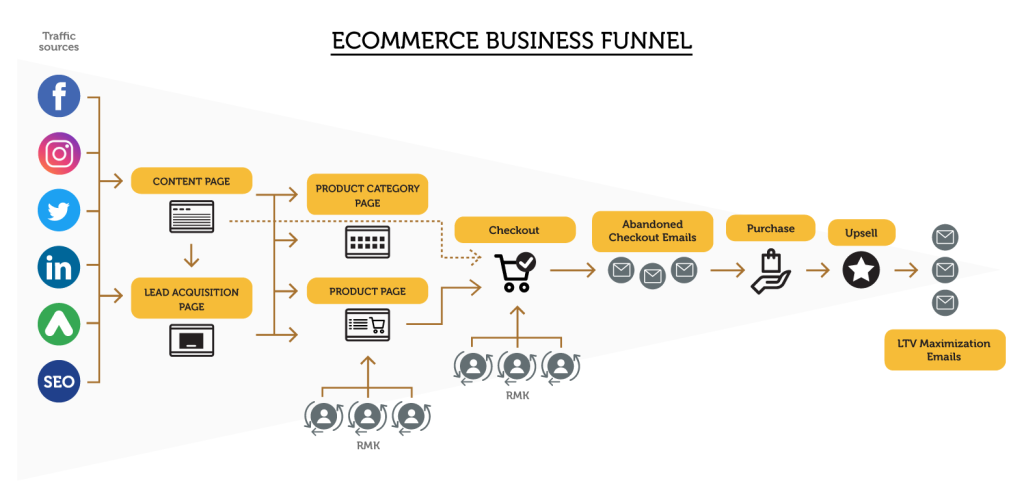

That concludes our in-depth look at the digital sales and marketing funnel.
The key points to take away
1. A digital sales funnel is a process you must establish in your business if you want it to grow. Without it, you will find it challenging to take firm control of your digital marketing and sales activities.
2. As digital sales funnels have evolved, they have become increasingly complex – mostly in response to the growing sophistication of online users. Nowadays, no matter what channel you advertise, you need to give value first in the form of ungated content (content that you distribute and share freely with no signup required).
3. The skills required to build funnels have evolved too. To run an effective funnel nowadays, you and your team need to have mastery over the following skills:
- Marketing and sales psychology
- Performance copywriting
- Lead generation
- Marketing automation
- Website UX and UI
- Multichannel traffic campaigns
- Building ungated content campaigns
- Video production
- Project management
- Multichannel traffic campaigns
- Data reporting and analysis
4. Across industries, funnels differ in length, in the number of lead acquisition layers, and in the use of integrated tactics like direct sales.
Experienced digital marketing strategists should be able to adjust the general funnel flow to the specific type best suited to a particular industry. And the cherry on top is being able to tweak it further to make it as effective as possible for a specific client persona or market trend. For assistance with this – you can always call us ????
With the right digital sales funnel to support your business, you’ll be steps ahead of your competitors in securing and retaining loyal customers. Your perfect funnel match will help you build a community around your products and grow your business for years to come.




